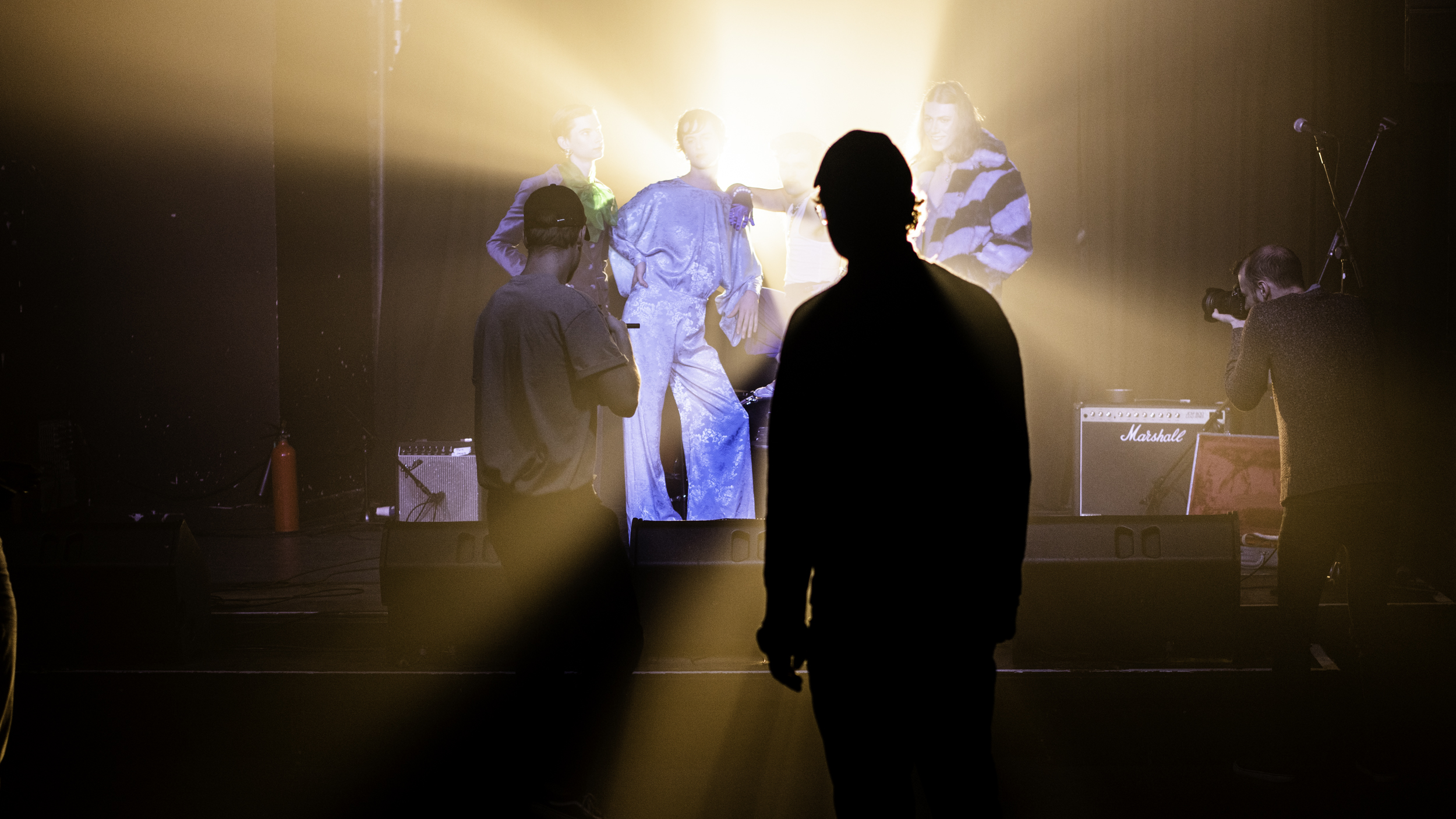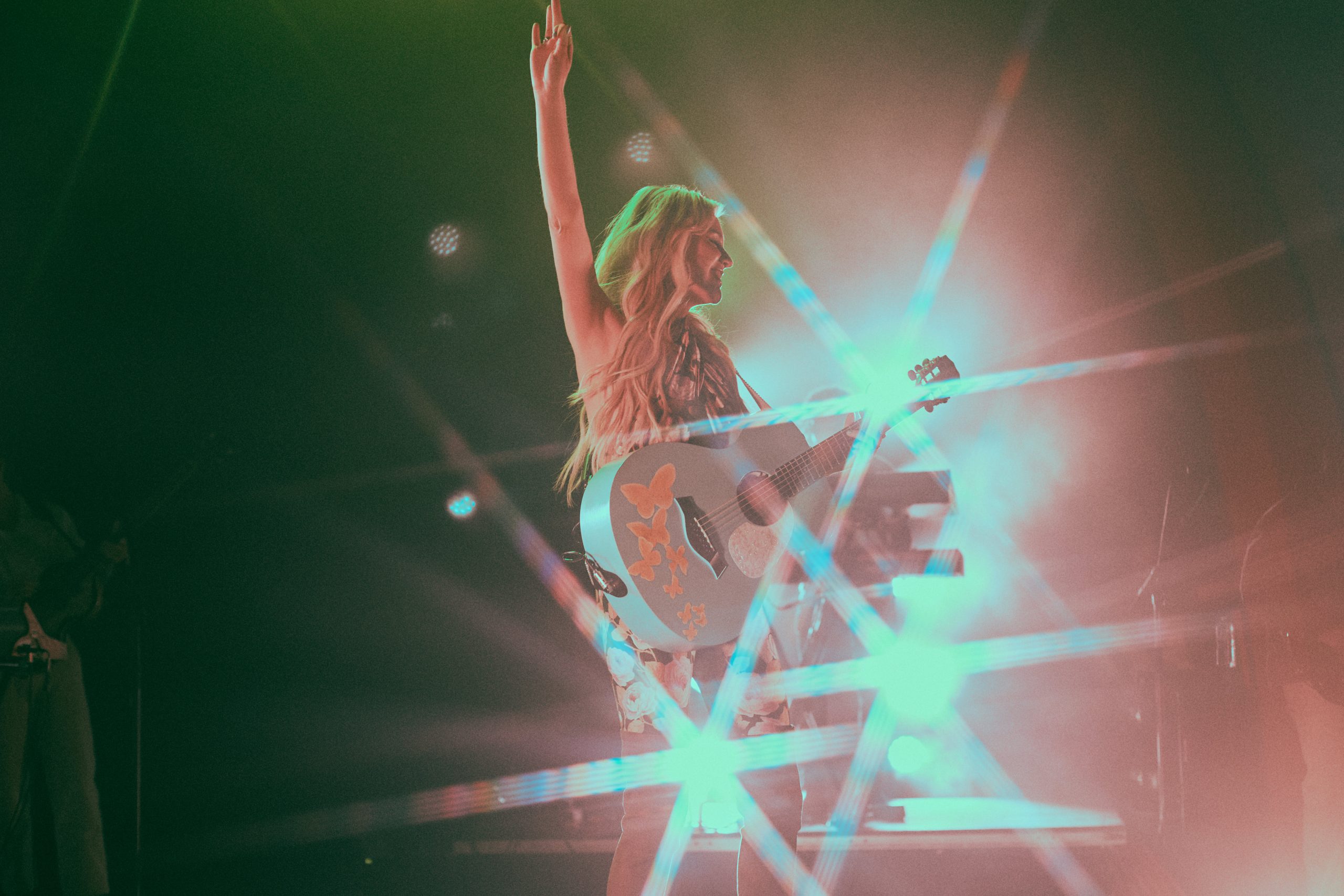Edwin Burdis, a former in-house artist for Domino Records, is the creative mind behind music videos for Arctic Monkeys, Rustin Man, and Alexis Taylor, as an artist he’s created some of the most interesting and thought-provoking exhibitions in the British contemporary art scene. We got the chance to have a chat him…
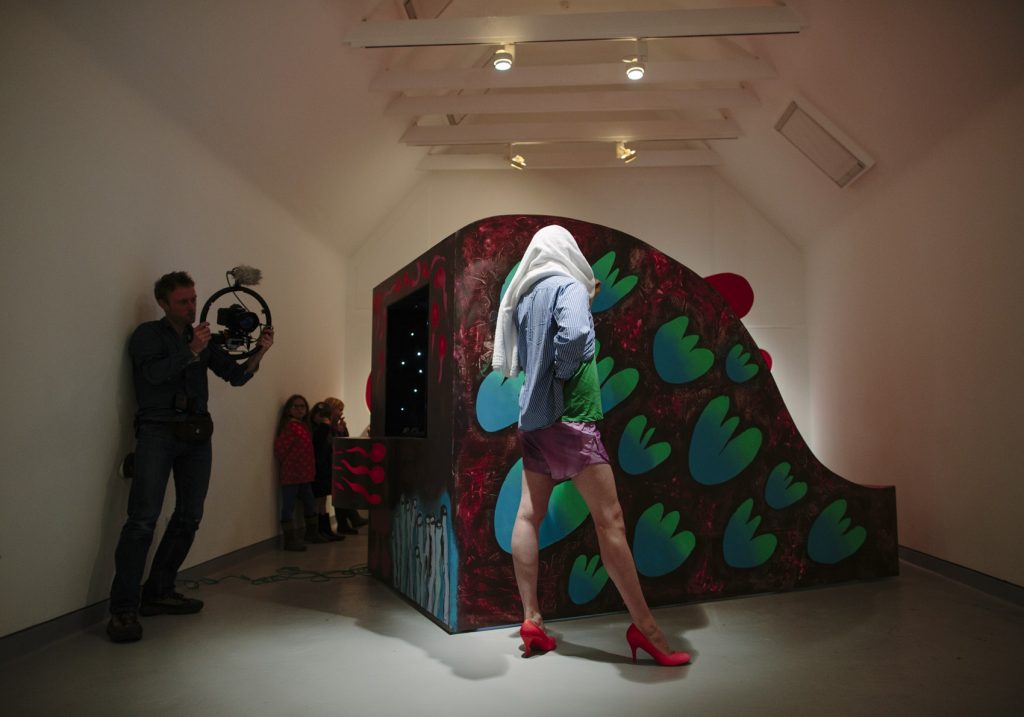
T: Straight into it, do you think space, like when you were living in New York, and when you were living in Berlin, is important to you?
E: Yes and no; when I was in Berlin I managed to wangle a record deal and I had some money, and this was a time when you could rent an apartment in Kreuzberg for €60 a month, and I was doing something. I was working on an album, that was an absolute disaster, and just winging it, so I wasn’t involved in Berlin at all. Apart from the fascination with German contemporary culture I guess, and the history. The second world war and all of those things. I had quite a strong relationship with Germany actually, I had three different girlfriends that are from different parts of Germany that I stayed with as well. That sort of Central Europe; I know that place and I like that place. New York, that’s overload isn’t it, I just stepped into a film set basically. So I enjoyed that, got into no end of trouble. So I guess I’m saying that it doesn’t…
T: Well, I guess there’s just the continuity of you existing in these different places?
E: Yeah, well you just get on with it, don’t you? Actual physical space is a big deal, and that’s another reason that I left London. I never thought that I would own a house, and I own a house now, and a Studio, like that was a dream, an idea that was never going to happen. That’s given me space, so a lot of the things that I’m doing at the moment wouldn’t have happened if I hadn’t have moved to Wales and I hadn’t had the space, especially the videos. I got a creative Wales award, so they pay your wage for a year, and there’s no like ‘you have to do this, you have to do that’, you could even do nothing if you wanted to. The point was that you didn’t have to think about bills, rent, you could just move forward. Through that, I met Jonny at Domino Records, and he offered for me to be their creative director for two years. I could only do those things because I had that, that energy, that money let me concentrate on that, and give it its whole worth rather than having to worry about practical stuff.
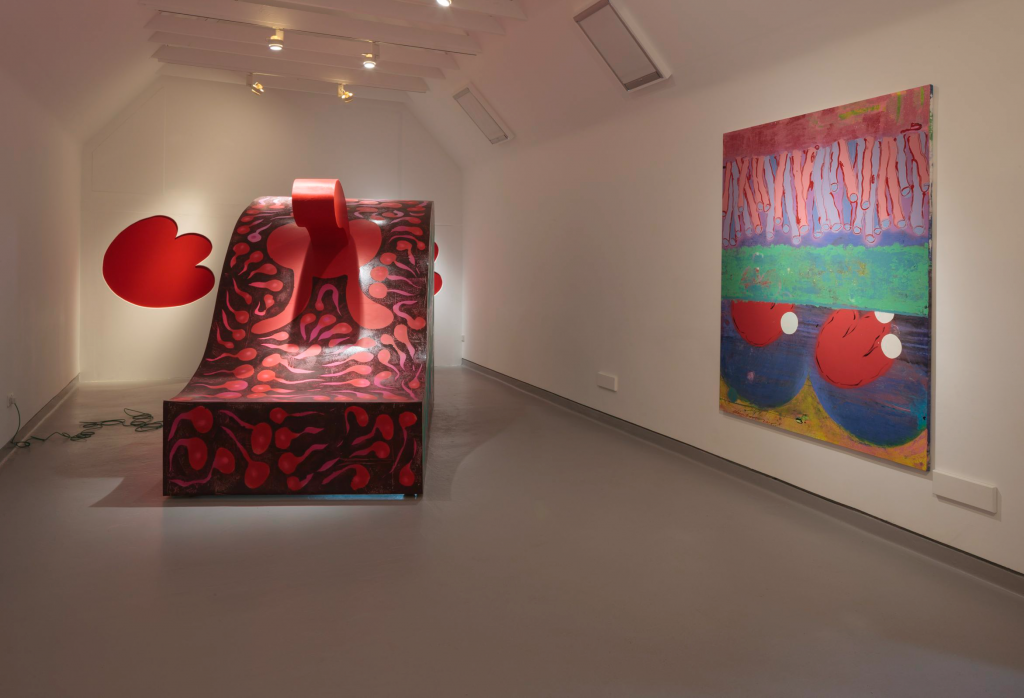
T: Talking about space and nationality raises questions about Britishness naturally, and I think lots of your visual art, in particular, has a lot of stuff that resonated with me – I don’t know if it was a nationally specific thing, but what’s your experience of Britishness and Englishness, and is it an important thing to you and your art? What’s your relationship to it perhaps?
E: It’s so complicated now, I’m having massive issues with living in Britain and you know what those issues are. I live in South Wales, in a small town, because my girlfriend grew up just outside of Newport- Newport’s fucking amazing- but I needed to get out of London. I couldn’t survive in London any more, and that was lots of different issues. I think I’ve always seen myself as Londoner, and then British. Not English or Scottish or Welsh or whatever, and then Europe. I grew up in the European Union. I think all of those are really tied up. What I can’t help and I try to subconsciously pursue, as some sort of a conduit, is contemporary British culture and the fact that we are an island, and we have had all sorts of people come here, all of the time, and their music and art, that’s what I grew up on. Black, white, male, female, I just can’t get my head around the fact that I’m hearing conversations in the street that I thought I’d never hear, as a middle-aged man, and that’s a sort of ignorance of mind, thinking it was only going to get better… I lived in New York and I lived in Berlin, and those experiences came up through what I was doing. Being homeless for a long time, properly homeless, on the street. I suppose that’s going to change your perspective on things. I’m really proud of contemporary British culture, but I’m not proud of Britain.
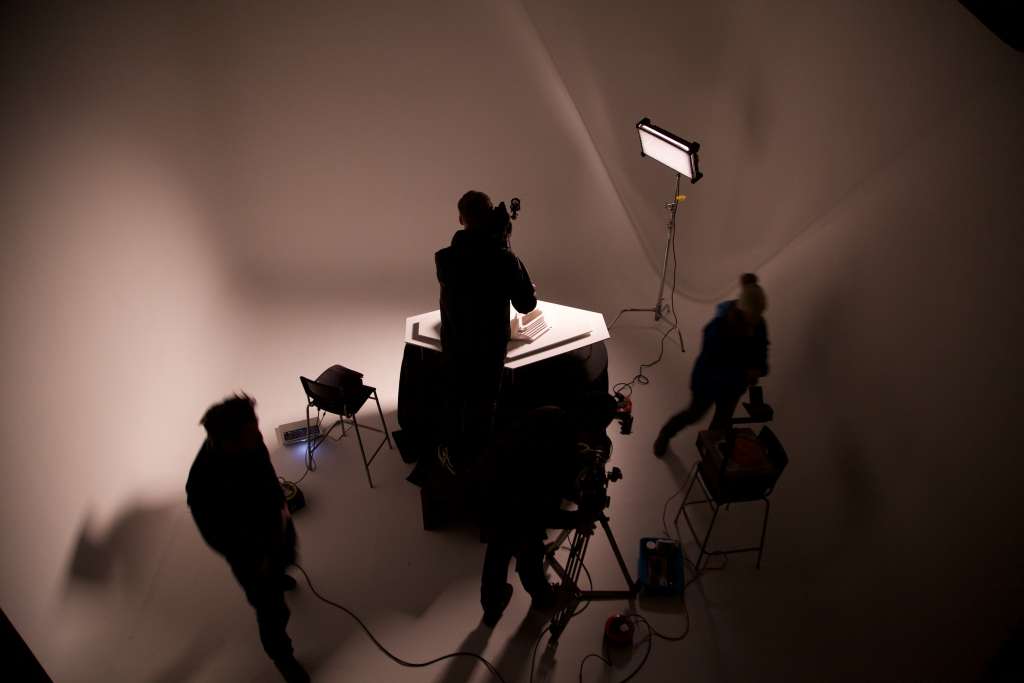
T: Do you think fame has changed in recent years or decades or do you think its essentially the same? When you see interviews with older artists, David Bowie, for example, they never pretended that fame wasn’t important to them, whereas now artists have to pretend that fame isn’t important to them.
E: I think I agree with that, and I think that now a lot more people have access to fame without working very hard. Talent is one thing, that’s like ten per cent of it, but the rest of it is just working hard and building your craft and revelling in that. That is definitely muddying the waters. This is all mixed up with the internet and the internet being a time machine, and we can be nostalgic and we can live through that… I definitely did use the internet as a nostalgia thing, and I do remember the late ‘70s, but you can step back to some places. I learnt my craft working with and for the artist, Mark Leckey, one of the most important contemporary British artists, and a lot of his work is about that, about nostalgia, and that you can just step into a version of the past.
I’m really proud of contemporary British culture, but I’m not proud of Britain.
T: So do you think that since the Arctic Monkeys’ video you worked on, which definitely had a ‘70s atmosphere, that the 1970s is a particularly appealing era for you? Was that to fit with the style
of the music or was it something that you gravitated towards as an artist?
E: My involvement in that was very much for the whole campaign, not just the videos. It was more to do with the building of the sculpture that Alex made, of the hotel, and that was a process that I was involved in with him. He basically turned his house in LA into a studio, which was very very seductive. There’s this one picture of Alex with the model, and (I’m not pointing fingers or anything) they very much wanted it to be this finished product, but I showed my girlfriend pictures of what the ‘90s.
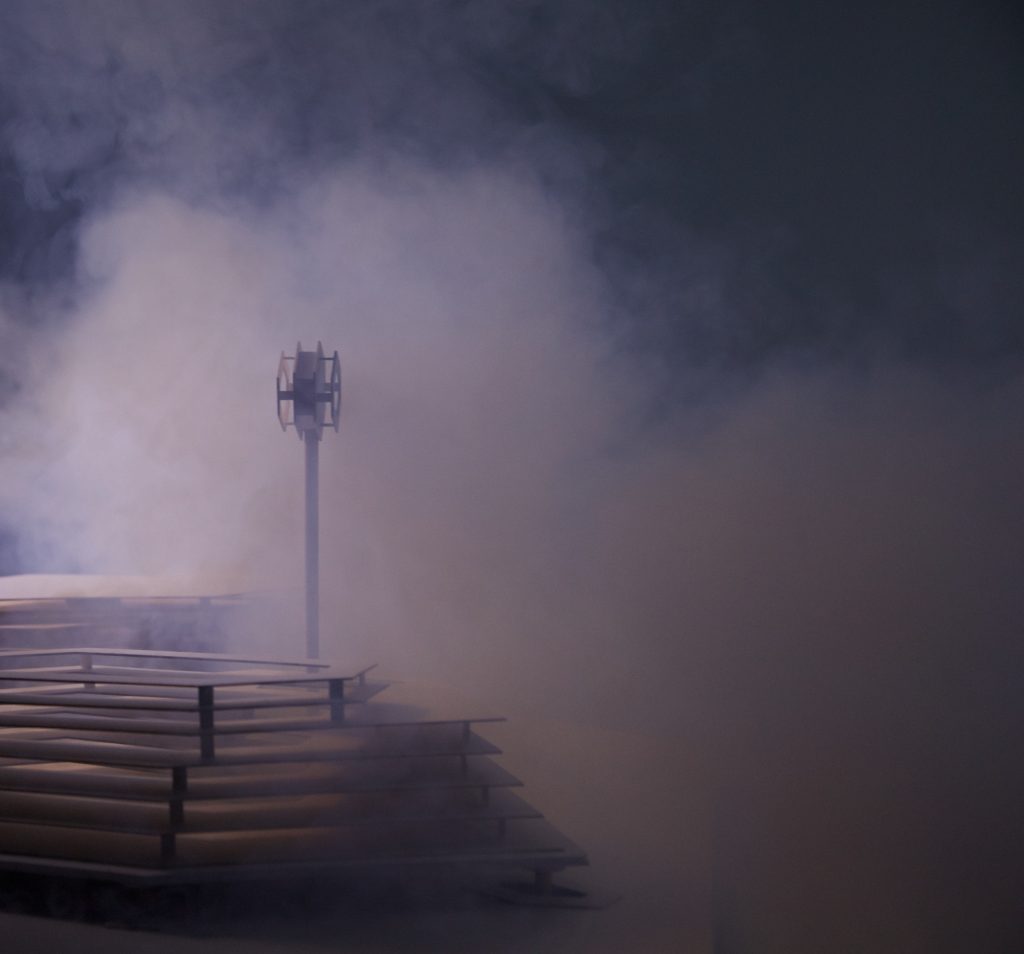
T: So it’s nostalgia more generally rather than for a specific era?
E: I think its personal nostalgia; remembering that moment when I heard an A Guy Called Gerald track in Coventry, in a club, or going up and down the M1 trying to find a rave, all this kind of stuff. It’s all very much personal experience relived through people putting up bits of video or tickets from something, you can even go on eBay and people have kept flyers from stuff and little bits of recording, it’s pretty weird how you can mine.
T: Speaking of the records and stuff, what’s your favourite medium to work with? Do you find that the creative process is similar with painting or sculpture or music or video?
E: I see it all in one big lump. I’m working on three other videos at the moment, and I’m going back to animation, or using my mark making and turning that into animation. I think I’m getting really off on that, that’s pretty mental. I feel like a boy again – not that I want to feel like a boy – but, I can just sit there all day and just draw… what I’m really enjoying about that is that the only thing I’m consuming is the computer, which was built, and power. There’s no waste. A lot of the work I’ve been making there’s a lot of waste and it was really getting me down, particularly with the materials I’m using like plywood and spray paint, there’s a lot of very toxic stuff that. A very small percentage of this work was being bought or going to a collection, it was sitting in a cupboard somewhere, so that was something I was very conscious of; getting away from that. So it means I can do even more of it because there isn’t a huge footprint.
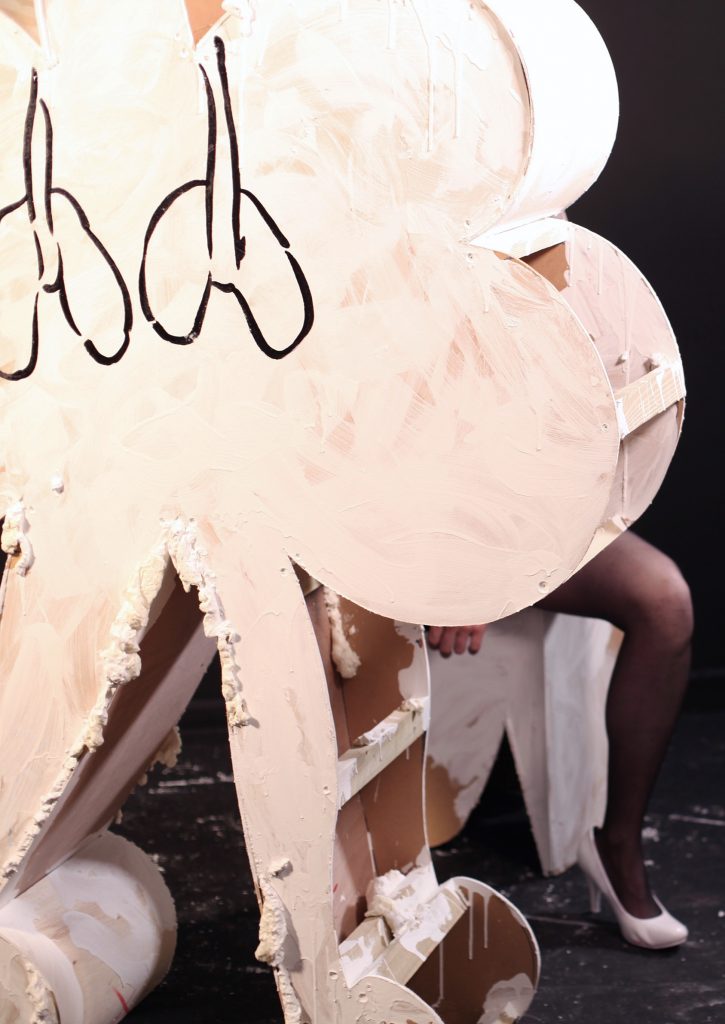
T: So do you find that lack of limitations, with digital stuff, quite freeing?
E: I was talking about this yesterday, with photoshop actually, and I’ve made music on the computer, and it’s the first time that I’m putting restrictions on it. It’s basically saying that this is the look that it’s going to have, and it’s staying like that. it’s only going to have these colours or it’s going to be in black and white. Being a creative director, you have to be good at making decisions, and that is something that I’m good at, creatively. I am a bit sort of lost sometimes.
T: When you can do anything, limitations are very important, I suppose.
E: Yeah, very much so, and that’s why I love doing, and I’m being told I’m very good at, music videos. I’m told that this is the budget, these are the resources, this is the deadline; do it.
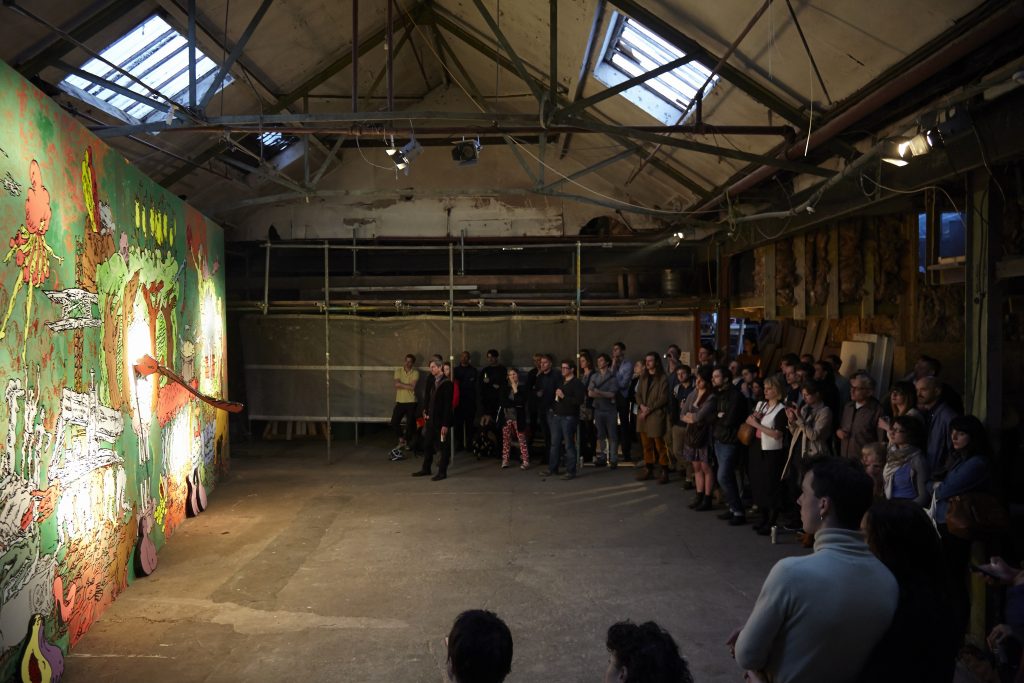
T: So do you find working with other people, with a tightly controlled budget and deadlines helps you to get things done, or do you prefer just the freedom of having a year to just think of things, or I suppose a combination of both?
E: Combination of both. That’s why we’re looking into funding because you don’t know what’s going to happen tomorrow and it sounds really bad but there is a lot of work coming in, and it’s been really hard because haven’t made something in like a year. When you’re making work, you’ve got a show on. Like with my galleries, I put on a show like every two years, so there’s lots of times for things to just stew and bubble and worry and panic and moments of joy and all of those things, where this is all happening very quickly. I’m looking at my table now and there’s like three different lists of things. I put down these bits of paper and I jot down things for different projects and it’s lots of stuff. They’re all very different, too.
T: Do you like being busy?
E: I just naturally am, creatively, I’m not very good at organising… my life! But yeah, I have to have these moments where I say that I’m going to take two days off and actually do nothing. Otherwise, I do just work all day into the night, no weekends. There are these periods when I’m not even going to pick up a pencil, I wouldn’t say they’re getting more frequent, but they are getting more disciplined as I get older. I’ve got to do that; I’ve got to do nothing. Read a book, watch some films, or go walking.
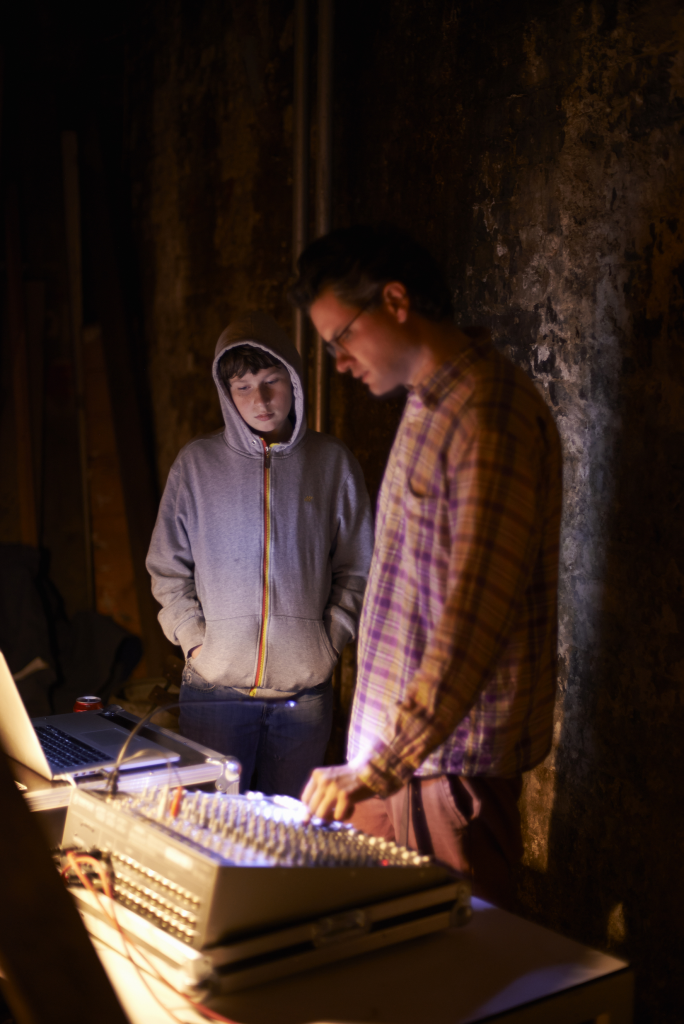
T: Well, I suppose in South Wales there are lots of nice places to go?
E: Yeah, we live halfway up a mountain and it’s a forty-minute walk into town…
T: That forces you to take the space to breathe, whereas in London you might not have had that.
E: Yeah, I mean for the last ten years I lived like a hermit in London, I wasn’t involved in anything really, not even going out of the door. And I used to love walking London, that’s what you did right? You’d walk those streets and look at things but it got to that point where… London’s not a very creative place anymore, not for me anyway. It’s a playground for the rich or you’re very poor. I think my generation was the last where, because in London everything’s sewn up, everything’s a commodity. Friends of mine used to have a warehouse in the Oval space, next to Broadway market, and we used to live in a canal house there… It’s all knocked down now. I think that’s one of the last places where you could literally walk into a space and decide to just do something there, and not think about money. It was actually about the process. I’m not being disrespectful to anyone, but when you’ve only got people coming from one particular background, where’s the rub?

T: So you think that creative tension is important?
E: Yeah, I grew up on a council estate in a single-parent family, and the people who I’ve worked with have come from all backgrounds and because of that there is that tension, the third brain happens. If I just hung out with the people that I grew up with, no disrespect, but I probably would have ended up in jail.
T: I’m kind of interested to know; people place a lot of importance on categories and you work in so many different mediums and styles, how would you define yourself? What defines your body of work?
E: Artist. I know exactly what you’re talking about, I’m not being flippant, but there are different times and places when I’ll say I’m a creative director. Either artist or creative director, those are the only labels I’d give myself. Seven years old, I said I would be an artist
Keep up to date with the art and work of Edwin Burdis on his website.

